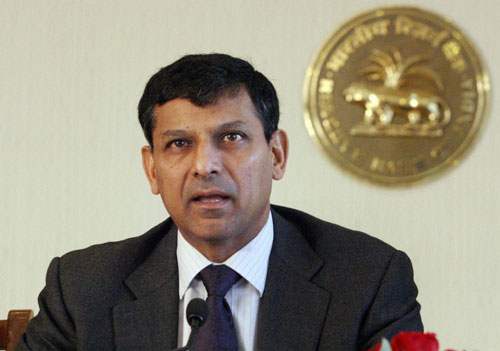Lenders say higher liquidity requirement may make borrowing more expensive for them, but they will refrain from hiking lending rates
The Reserve Bank of India (RBI) left the repo rate and the cash reserve ratio (CRR) unchanged at 8% and 4%, respectively, on Tuesday, signalling that it wants rates to remain elevated.
The central bank, however, increased the liquidity requirement under the seven-day and 14-day term repos from 0.5% of net demand and time liabilities (NDTL) to 0.75%, as a result of which the cost of funds for banks could go up slightly. Analysts estimate the rise in costs at no more than 10 bps for those banks who borrow regularly, but do not anticipate any change in loan rates immediately.





RBI Governor Raghuram Rajan during the announcement of RBI monetary policy at the RBI Headquarters in Mumbai(PTI)
SBI chairperson Arundhati Bhattacharya confirmed that the move would lead to a slightly higher cost of funds as the rate would be near the repo, but not at the policy rate. ?To that extent, if I am borrowing from the repo window and, instead, do so from the term window now, it will be a little more costly. The quantum of increase needs to be figured out,? said Bhattacharya.
She, however, ruled out any change in lending rates in the near term. ?It?s not that the change will be transmitted so soon. The RBI is looking to develop better and quicker transmission in the future and wants the call rates to be very close to the policy rates. If we are getting pushed to the long term, and if the cost of funds increases, the transmission will be a little better, but there is still no one-on-one relation,? she said.
The RBI had increased the key repo rate by 25 bps at the last policy review in January, but most banks refrained from hiking their lending rates.
Loan growth has been sluggish and banks have been scouting for quality customers to whom they can lend at lower rates. Bankers told FE recently that they would not mind cutting rates by 25-50 bps for high-quality borrowers. Most public sector banks have a base rate that is higher than 10%.
For the fortnight ended March 7, non-food credit growth increased 15.03% y-o-y. Credit growth has been hovering around 15% for the past four months; for FY14, RBI has projected credit growth at 15% and deposit growth at 14%. Credit growth had hit a high of 18.20% y-o-y in the fortnight ended September 18.
Indian Bank, meanwhile, has increased its base rate by 5 bps to 10.25% per annum effective from April 1, 2014.
Bank of Baroda CMD SS Mundra said the objective of a shift of liquidity from the overnight market to the term market was to help develop the yield curve and, from that perspective, it was a good move.
Punjab National Bank CMD KR Kamath said: ?It is going to be life as usual for some time… It is too early to respond on rate actions. It?s a welcome sign and there is possibility for some action on the rate front if the situation improves.?
The RBI also suggested that banks not levy penal charges for non-maintenance of a minimum balance in ordinary savings bank accounts, but, instead, curtail the services accorded to those accounts.
Commenting on this, HDFC Bank CEO Aditya Puri said: ?The consumer will actually end up paying more.? He said if the minimum balance is, say, R10,000, the bank earns R400 or 4%. ?However, for that money, we provide cheques, ATMs, and statements; even though the breakeven for a bank to provide such services is R30,000,? he said.




















